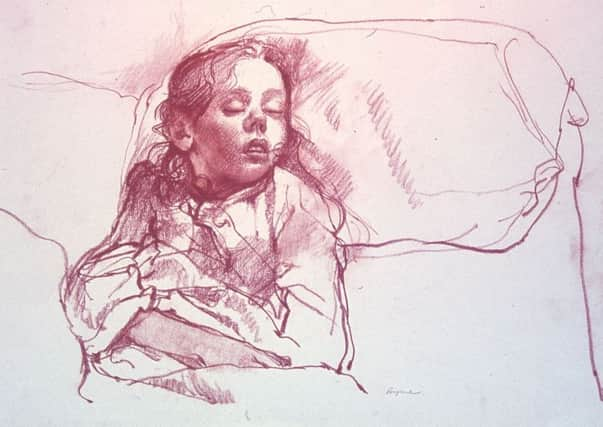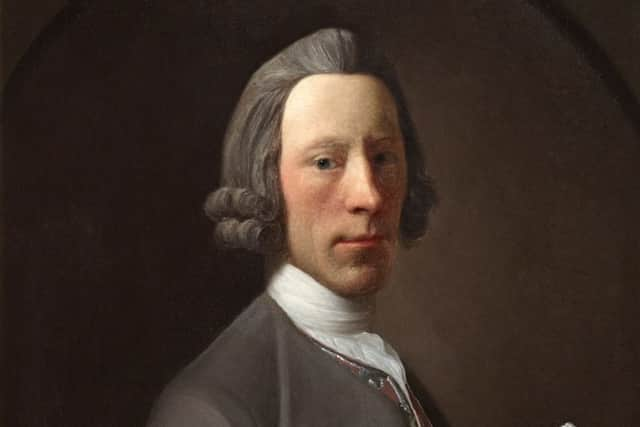Art reviews: Scottish Art exhibition, Edinburgh


Scottish Art: People, Places, Ideas
City Art Centre, Edinburgh
Star rating: *****


Duncan Shanks: Works on Paper 1957-2013
Star rating: ****
James Cowie: Enigmata
Star rating: ****
Both at the Scottish Gallery, Edinburgh
Edinburgh City Art Centre now holds one of the best collections of modern Scottish art. Indeed it is really more comprehensive than the national collection. The National Gallery of Modern Art has pursued a somewhat partisan collecting policy and conspicuously lacks a good many of the major artists of recent decades. If the Edinburgh City collection is more balanced and representative, this is on the one hand because of the Jean F Watson Bequest, a fund dedicated to buying contemporary art, and on the other to the careful use of this fund by ECAC’s principal curator Ian O’Riordan. The new exhibition from the collection, Scottish Art: People, Places, Ideas, shows just how good the collection has become under his quiet and thoughtful leadership. Look at the dates of acquisition on the labels and it is really striking how many major works have been added during his 30 years in office. The news that he is now leaving is a shock. I don’t think the city will realise what it has lost till he is gone. His will be a hard act to follow.
The exhibition is shown over four floors of the Art Centre building, effectively the whole space barring the rather gloomy basement, and the show has been divided up thematically, floor by floor, under the headings People, Landscape, Still Life and Abstraction. There is added variety too because different bits have been chosen and hung by different members of the team. The result is a delightfully diverse display, some witty juxtapositions and a good many unfamiliar works. That the latter is true is itself testimony to the richness of the collection. It is not shown nearly often enough, nevertheless over the years you would expect to have seen most of it, but each time it is shown more seems to come out of the woodwork, almost literally too, for there are quite a few works here of unknown provenance. Mostly details of their acquisition are lost in the mists of time, but there is an interesting piece of Op-Art dated 1972 that also represents a mystery. It is by one A Neil Morrison, but nothing appears to be known about him, nor how the picture came into the collection. So if you can fill in the blanks do let them know.
Advertisement
Hide AdThe first floor is devoted to people, but not just to rows of portraits. It does begin with Allan Ramsay’s portrait of Thomas Shairp of Houston in a grey coat and splendid scarlet, silver embroidered waistcoat (acquired in 1993,) but the humanity Ramsay manages even in such a formal portrait is endorsed by the next picture which is an exquisite drawing by John Byrne of a sleeping child. There is an implicit comparison too between Byrne’s wonderful draughtsmanship and Ramsay’s on which ultimately the Scottish tradition of drawing was founded. Then you meet a rather grim 17th century Lord Provost to be relieved in turn by one of David Williams’s charming photographs of the girls of St Margaret’s School. And so it goes on, constantly refreshing your attention with unexpected changes of mood, scale and medium. One of the most striking pictures in this section, for instance, is Robert Scott Lauder’s wonderfully direct portrait of his father, but two scenes of Edinburgh street life of Lauder’s inimitable older contemporary Walter Geikie lighten the mood. John Duncan and his pupil Eric Robertson hang side by side, Duncan with a rather sweet, Pre-Raphaelite composition of girls and roses, Robertson with a frankly erotic naked Aphrodite. The juxtaposition has added piquancy when you remember how much Duncan disapproved of his pupil’s eroticism. A nice portrait of a girl by David Foggie is paired with a new acquisition by the same artist, an atmospheric picture of an Edinburgh stair in the blackout in 1941.
Move upstairs to landscape and the arrangement is different, but equally refreshing. McTaggart’s masterpiece, Jovie’s Neuk, his Running for Shelter, a painting by Robert McGregor of women picking stones in a field, a view in Venice by Charles Mackie, a vivid watercolour by Joseph Crawhall and a beautiful small picture by JQ Pringle hang in a row. The quality is striking, but so is the fact that all these pictures were painted within a few years of each other. Equally striking is a group of Colourists including Cadell’s lovely painting of the interior of the church of the Salute in Venice. There are several first-class paintings by Gillies, prints by William Wilson, particularly fine paintings by Ian Fleming and Frances Walker and a really magnificent stormy sky by John Houston. Dreaming the Old Man is a dark and evocative view of broken rocks on the Island of Hoy by Thomas Joshua Cooper. A view of a town by Carol Rhodes, painted in 2005, shows how here as elsewhere the collection is up to date.
Gillies’s still lifes can be disappointing, but Studio Table, a big picture and a homage to Georges Braque, looks very good among the still lifes. An exquisite watercolour of flowers by Gillies’s close friend John Maxwell hangs alongside, its delicacy matched by a coolly beautiful painting by Anne Redpath. It is mostly in whites and greys, but they are lifted by the sharp yellow of a lemon. The Table by Alexander McNeish from 1958 is an expressive, near abstract composition, but in this section too the story comes up to date with work by Calum Colvin and Ron O’Donell.
At the City Art Centre the light gets better as you go up through the floors, so the luminous top floor is well suited to the mostly cool, airy pictures gathered under the heading Abstraction. The spareness of the hang is really sympathetic too. Indeed the different feeling on each of the floors shows how much thought has gone into the whole show. Calm Grey, a big picture by Ken Dingwall looks luminous in this setting and in a nice way the rhythmic patterns of its brushwork echo McTaggart’s Jovie’s Neuk hanging two floors down and directly below. A beautiful collage by Philip Reeves called Old Pier Berwick is almost a landscape and a sheet of drawings alongside show how it evolved from his observation of the actual pier. In William Johnstone’s Wotan, too, a sense of landscape hovers in the turbulent fields of his abstract brushwork, but Alan Shipway’s Last Month is more simply lyrical, the purity of his colour akin to notes of music. Altogether this is a rich and rewarding show. Its quality is indeed a tribute to Ian O’Riordan’s 30 years of distinguished service.
Scottish art at its best is also represented in two parallel shows at the Scottish Gallery. Upstairs is a collection of works on paper by Duncan Shanks. It is not billed as a retrospective, but it does cover his whole career and there are several striking works dating from the 1960s. Throughout his career, Shanks’s art, however abstract it becomes, always starts with beautifully recorded observations of the world about him and if for the artist these are sometimes only a step on the road to something more elaborate they are often quite beautiful.
The lower floor of the gallery is devoted to drawings by James Cowie. He was a master draughtsman. By his hand even a study of a sleeve or a piece of drapery can be a thing of beauty, but there are also portrait studies here like the delicate chalk drawing of a girl called The Silk Blouse. Cowie was also a surrealist, however, and there are several drawings here for his enigmatic still lifes. In a self-portrait ion which he is represented just by his hat, he is dwarfed by the torso of a classical Venus, seen both from behind and from in front in a mirror above him. As a self-image, the picture has a wry eroticism worthy of the best surrealists.
• Scottish Art until 27 September; Duncan Shanks and James Cowie until 30 June